May 29, 2025 | 15:57 GMT +7
May 29, 2025 | 15:57 GMT +7
Hotline: 0913.378.918
May 29, 2025 | 15:57 GMT +7
Hotline: 0913.378.918
Tay Ninh took the initiative in local orchid supply a number of years ago. Huong, the proprietor of a florist shop in ward 3 of Tay Ninh, stated that almost all of the orchids for sale in her shop are indigenous.
"Our establishment carries orchid varieties such as Foxtail, Dendro, Mokara, and Phalaenopsis. All are abundant in Tay Ninh, fresh, and less expensive than those imported from other regions, according to Huong.
Follow her lead as well Hoang Hoa Orchid Garden in Bau Don commune, Go Dau district. Alongside the Dong Canal with its abundant water sources, the garden is situated on a 2-hectare plot with hundreds of floral varieties during the blooming season.
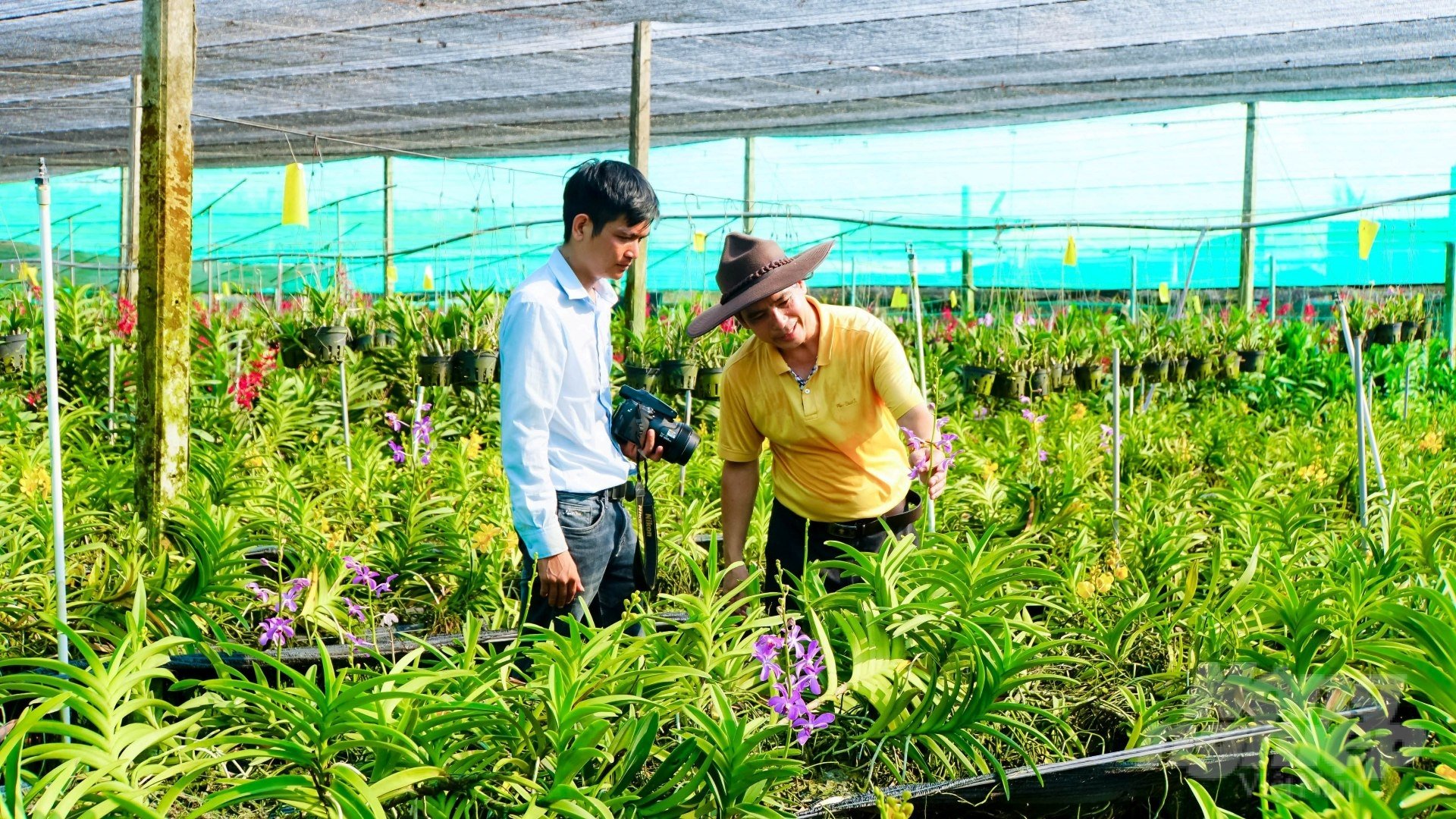
The Vietnam Agriculture Newspaper reporter was introduced by the owner of the orchid garden Hoang Hoa about the orchid lines and the orchid care process on the sunny, windy land of Tay Ninh. Photo: Le Binh.
The proprietor of the garden, Nguyen Hoang Hoa, enthusiastically led us to all the beds and orchids in the garden. The orchid "farm" is home to a variety of orchid species, but focuses primarily on Dendro and Mokara, supplying at least one thousand orchid branches per day at a price range of VND 10,000 to 13,000 per branch and generating tens of millions of dongs per week.
Prior to Hoang Hoa's migration to Tay Ninh to cultivate orchids, Bau Don was uncultivated and only appropriate for water rice cultivation. His own orchid garden in Cu Chi, Ho Chi Minh City, was successful. The decision was regarded as appropriate because the two locations have comparable weather, climate, and soil.
"Tay Ninh has an advantage that is rarely encountered elsewhere: water. The abundance of water guarantees the absence of arid conditions. My adjacent orchid garden remains cool and appears to have its own microclimate because of the Dong Canal. With the available water resource, all I need to do is design an appropriate grid house and sprinkling system to combat the intense heat", Hoa stated, "Wherever there is water, there is a benefit."
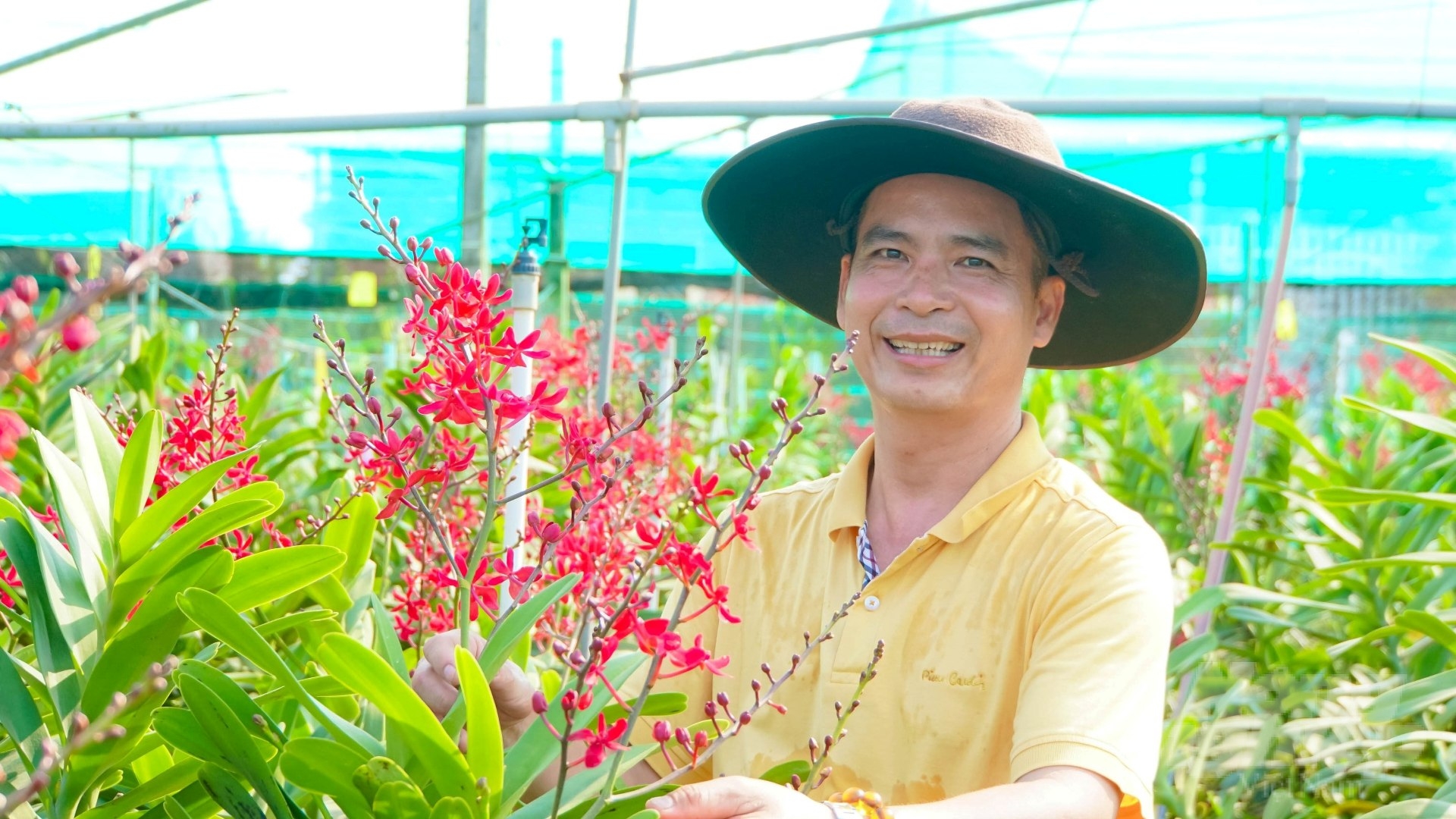
In order to have the crimson orchids blooming every day, Hoang Hoa had to overcome prejudices and put all his faith in the water of the East - Tay Ninh Canal. Photo: Le Binh.
According to the proprietor, Dendro and Mokara are orchids that thrive in humid climates. From the system of conservatories, net houses, spraying, fertilizing, automatic irrigation, etc., the entire production procedure is controlled by advanced technology. The orchids continue to grow and develop uniformly, and the blossoms bloom more evenly and are more attractive than in other areas.
The director of the Center for Agricultural Extension in Tay Ninh province, Ha Thanh Tung, concluded that Hoa's model for producing cut orchids is well-invested and beneficial for farmers in the region to adopt.
"The model yields a higher income per unit of land than other local crops," Ha Thanh Tung explained that if humidity, temperature, and the care and disease prevention processes are well-controlled, high productivity will be achieved.
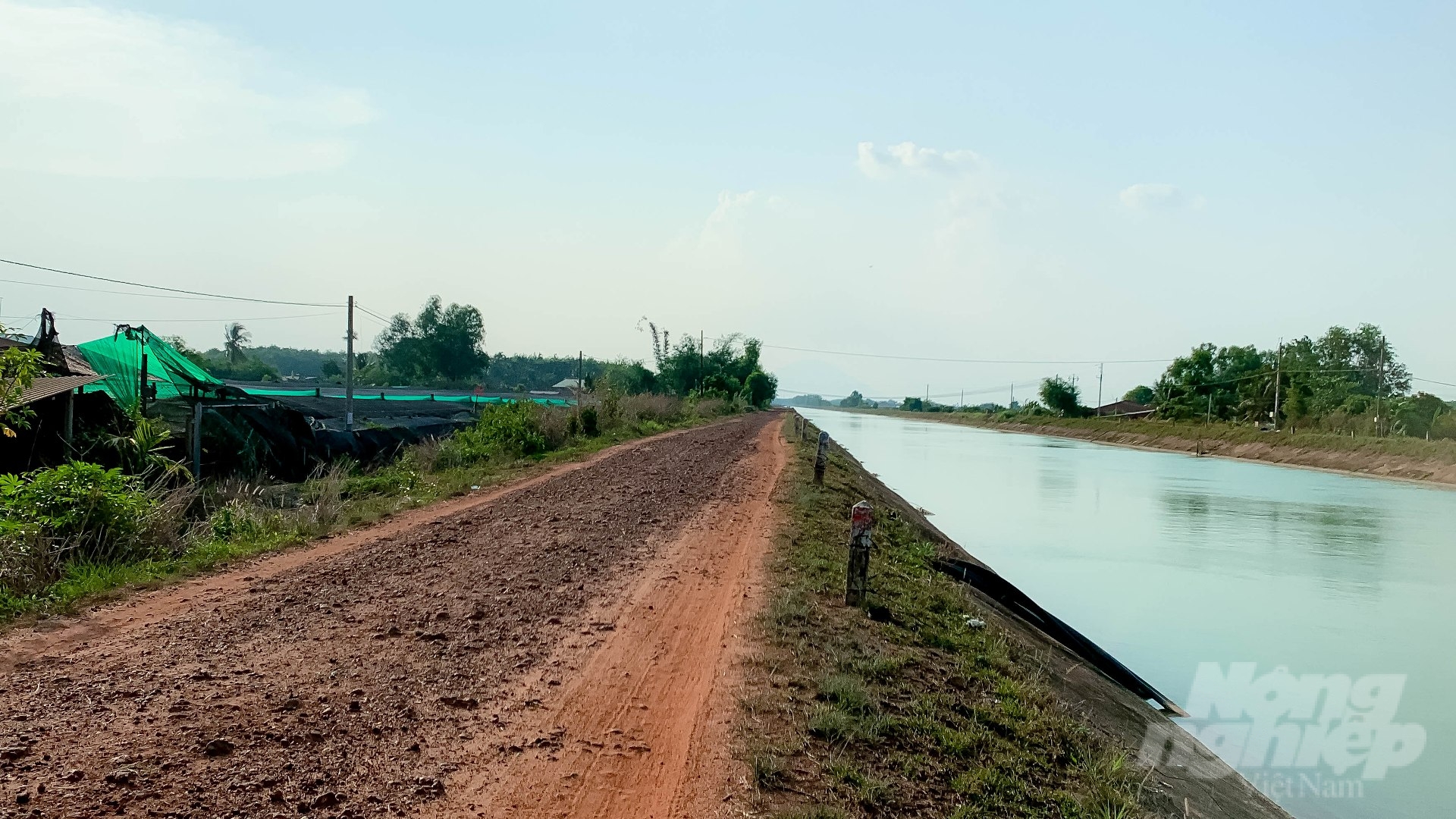
With the advantage next to the East Canal, Hoa's orchid garden always has enough water to irrigate the plants, the air is cooler than in other places. Photo: Le Binh.
Tay Ninh was once well-known for its fruit plantations, which included high-value crops such as custard apple, durian, mango, pomelo, jackfruit, and banana, among others. In addition to the economic efficacy, cut orchids are emerging during the flowering season.
According to the Tay Ninh Department of Agriculture and Rural Development, the total orchid growth area in the province will reach 187ha by the beginning of 2023, primarily in the Trang Bang and Tan Chau districts. The majority of cut orchids are Dendrobium, Mokara, Phal, and Foxtail due to their aesthetics, diverse color palettes, and high economic value.
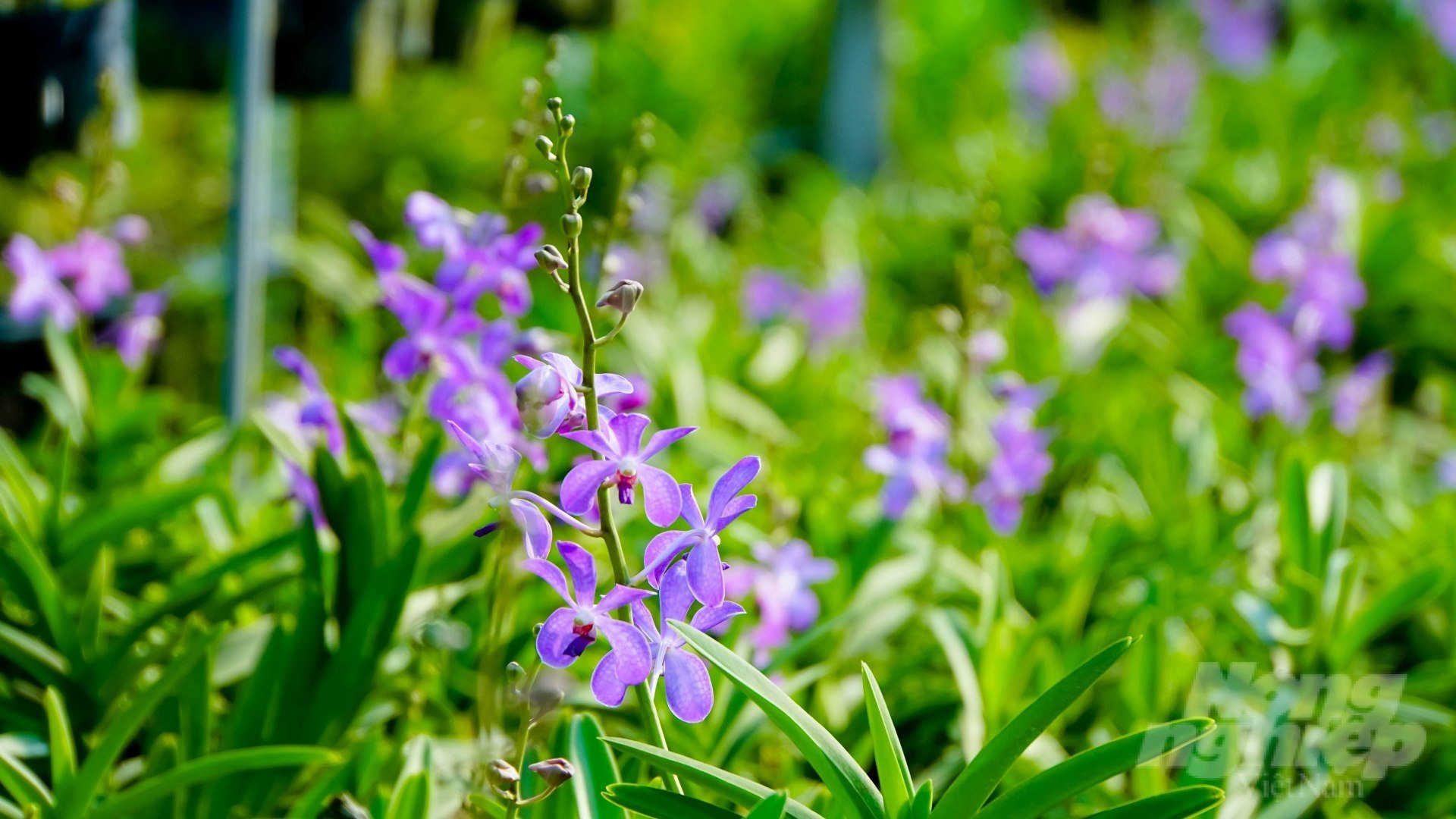
It is estimated that the orchid growing area in Tay Ninh province reaches 187 hectares and will continue to expand. Photo: Le Binh.
In the Tan Chau district, many wealthy people view the Foxtail orchid as an illustration. Le Duy Hanh (Tan Trung hamlet, Tan Ha commune, Tan Chau district), who initially grew orchids in only a few containers as a hobby, expanded the orchid cultivation area to 10,000m2.
Since 2019, Hanh has also invested in the technological advancement of this orchid garden with membrane dwellings and sprinkling irrigation systems, among others.
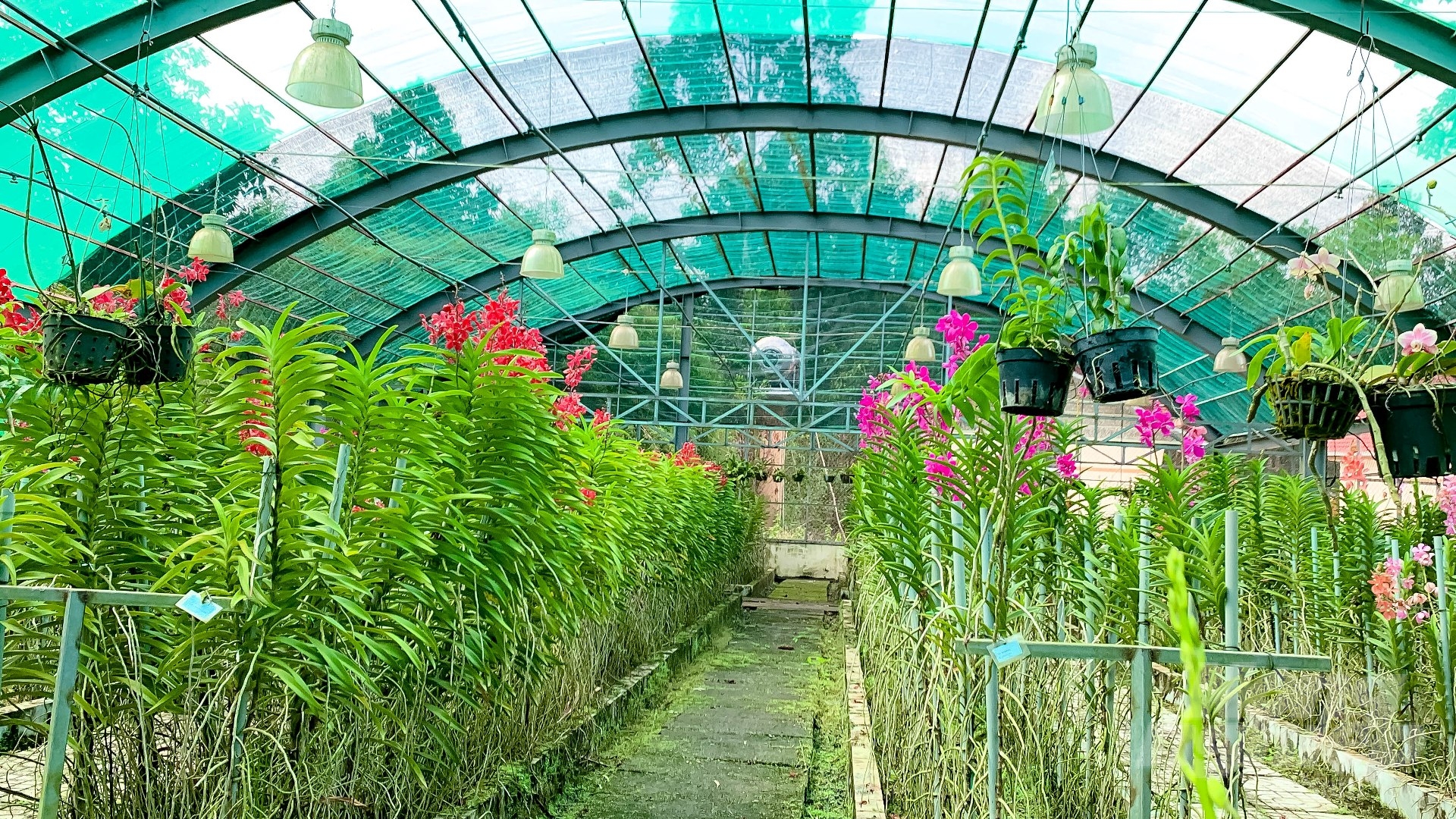
Many orchid growers in Tay Ninh are investing methodically, identifying this as a long-term, sustainable, and high-income crop. Photo: Le Binh.
Hanh did not stop there; he shared his experience of planting, caring for, and supplying seeds to more than 40 other farmers in the region, as well as purchasing the products of these cultivators to ensure peace of mind production.
Recently, the Farmers Association of Tan Chau supported a VND 150 million loan for six households in Tan Ha commune to cultivate and care for orchids.
The majority of Tay Ninh province's orchids are grown in the Tan Ha commune, which covers nearly 30ha. Many producers are transitioning from other fruit commodities to primarily Foxtail orchids.
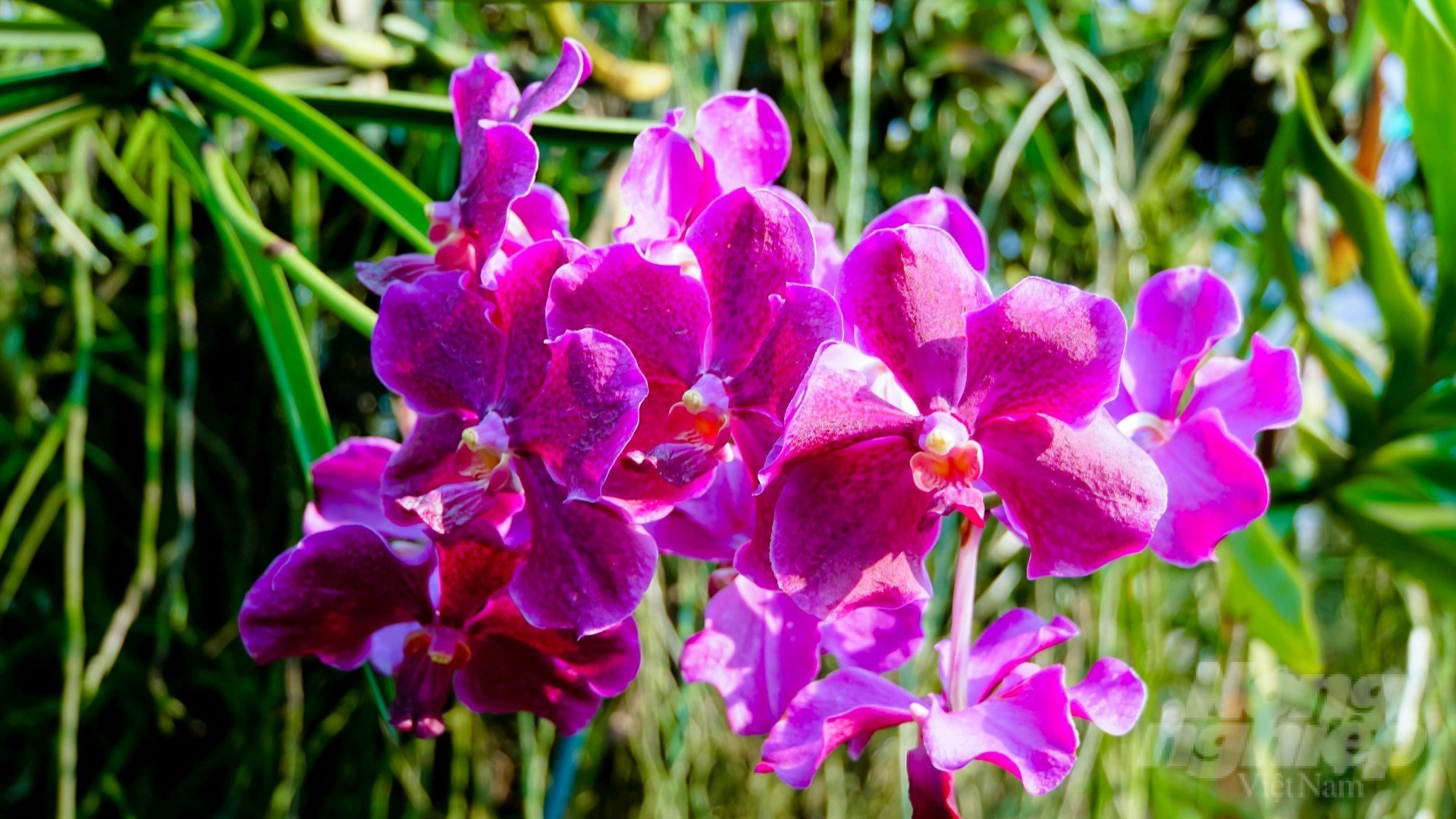
Tay Ninh expects orchids to soon become the main ornamental flower, anticipating the investment trend of businesses from all over the world, in line with the province's urban agriculture orientation. Photo: Le Binh.
In addition to receiving loans to develop and invest in orchid varieties, these orchid garden proprietors also receive assistance from the Tan Chau District Farmers' Association in the form of training and transmission of orchid care techniques, as well as the exchange of knowledge with artisans who have a great deal of experience. Experience with orchids is required for efficient orchid maintenance.
In addition, the Tay Ninh Agricultural Extension Center routinely organizes training sessions, seminars, and planting and care instructions for orchids.
Translated by Linh Linh

(VAN) FAO’s Director-General addresses the 5th Baghdad International Water Conference.
/2025/05/26/1716-4-nongnghiep-191706.jpg)
(VAN) Chain linkages, technological innovation, and raw material zoning are three strategic pillars for the coconut industry to strongly develop and elevate its position on the global agricultural map.
![Advanced mariculture – an inevitable trend: [4] Accompanied by scientists](https://t.ex-cdn.com/nongnghiepmoitruong.vn/608w/files/sohk/2025/05/13/1941-pgsts-vo-van-nha-140958_717.jpg)
(VAN) According to Assoc. Prof. Dr. Vo Van Nha, Director of the RIA III, the development of advanced offshore mariculture is no longer an option but an essential path for Vietnam’s fisheries sector.

(VAN) Vietnam is intensifying the development of mollusk farming areas that meet international standards, aiming for sustainable growth and enhancing its export position in the global seafood market.
![Advanced mariculture – an inevitable trend: [3] Policy-driven momentum](https://t.ex-cdn.com/nongnghiepmoitruong.vn/608w/files/doanhtq/2025/05/21/0104-0616-0348-nuoi-bien-170339_789.jpg)
(VAN) To ensure the success of offshore mariculture that uses advanced technologies, it is essential to establish supportive policies that inspire both individuals and enterprises to invest with confidence.
![Advanced mariculture – an inevitable trend: [2] Outstanding results](https://t.ex-cdn.com/nongnghiepmoitruong.vn/608w/files/sohk/2025/05/12/4632-4136-nuoi-bien-11-164117_819.jpg)
(VAN) Pilot models of high-tech offshore mariculture in Vietnam, particularly in the South Central Coast region, have demonstrated exceptional economic returns and sustainability, setting a new direction for the country’s aquaculture industry.
![Advanced mariculture – an inevitable trend: [1] Moving offshore](https://t.ex-cdn.com/nongnghiepmoitruong.vn/608w/files/phucpm/2025/05/18/0252-2436-nuoi-bien-6-162148_783.jpg)
(VAN) Mariculture using advanced technology and moving offshore is an inevitable trend, as nearshore areas increasingly reveal limitations.